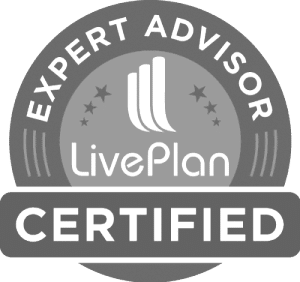Financial planning is essential for anyone who wishes to meet specific financial goals, secure their financial future, and enjoy peace of mind. A solid financial plan serves as a roadmap that helps you navigate through various financial milestones and challenges.
“Creating a solid financial plan is like building a house: you need a strong foundation to support what you’re building for the future,” comments Eric Sheldon, CPA. “Just as you wouldn’t ignore cracks in your home’s foundation, you shouldn’t overlook the importance of budgeting, saving, and investing wisely.”
Step-By-Step Financial Planning Guide
This Step-by-Step Guide is your blueprint for financial success. With clear goals and a sensible strategy, you’ll be well on your way to constructing a financially secure life.
Step 1: Set Clear Financial Goals
What to Do: List down your short-term, medium-term, and long-term financial goals.
Examples:
- Short-term: Save $5,000 for a vacation next year.
- Medium-term: Save $20,000 for a car in 3 years.
- Long-term: Retire at 65 with $1 million in savings.
Step 2: Assess Your Current Financial Situation
What to Do: Analyze your income, expenses, debts, and assets.
Examples:
- Monthly income: $5,000
- Monthly expenses: $3,000
- Debt: $15,000 student loan
- Assets: $10,000 in a savings account
Step 3: Create a Budget
What to Do: Based on your income and expenses, create a budget to manage your money better.
Example Budget:
- Monthly Income: $5,000
- Expenses:
- Rent: $1,000
- Utilities: $200
- Groceries: $300
- Entertainment: $100
- Savings: $1,000
- Debt Repayment: $300
Step 4: Build an Emergency Fund
What to Do: Save at least 3-6 months’ worth of living expenses in an easily accessible account.
Example:
- Monthly expenses: $3,000
- Target emergency fund: $9,000 to $18,000
Step 5: Eliminate High-Interest Debts
What to Do: Make a list of all your debts and prioritize paying off high-interest ones.
Examples:
- Credit Card: 18% interest rate, $5,000 balance
- Student Loan: 6% interest rate, $15,000 balance
Step 6: Invest for the Future
What to Do: Start contributing to retirement accounts, and consider other investments like stocks, bonds, or real estate.
Examples:
- Contribute $500 per month to a 401(k)
- Invest $200 per month in a diversified stock portfolio
Step 7: Review and Revise Insurance Needs
What to Do: Make sure you’re adequately insured. Consider health, life, property, and other forms of insurance.
Example:
- Life insurance policy with a $250,000 payout
- Health insurance with a $500 deductible
Step 8: Plan for Taxes
What to Do: Consult a tax advisor to optimize your income, investments, and savings for tax efficiency.
Example:
- Contribute to a Roth IRA to enjoy tax-free growth
- Donate to charity to get tax deductions
Step 9: Monitor and Update the Financial Plan
What to Do: Regularly review and adjust your financial plan to stay aligned with your goals and life changes.
Examples:
- Increase 401(k) contributions after receiving a salary increase.
- Revise the budget to accommodate a new family member.
Step 10: Seek Professional Advice
What to Do: Consider consulting with a certified financial planner to review your financial plan and offer expert advice.
Example:
- Schedule a yearly meeting with a financial advisor to review your investment strategy and financial goals.
By carefully following these steps, you can create a robust financial plan tailored to your needs and objectives. Remember, financial planning is an ongoing process that requires regular monitoring and adjustments for optimal results.
If you need help creating and monitoring your financial plan, reach out me.
You Might Also Like
- The Importance of Financial Planning: Securing Your Future
- Mastering Your Finances: Essential Tips for Effective Financial Planning
- From Goals to Action: Crafting a Personalized Financial Plan
- Navigating Life’s Financial Milestones: How Financial Planning Can Help You Thrive
- Financial Planning with Roth IRA Conversion







